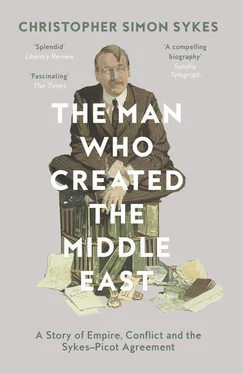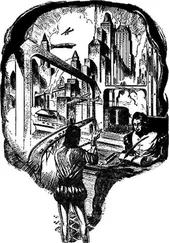The nuptials, which took place on 3 August 1874, in Westminster Abbey, were as splendid an occasion as any bride could have wished for, with a full choral service officiated by the Archbishop of York, assisted by the Dean of Westminster. It was, wrote one columnist, ‘impossible for a masculine pen to do justice to such a scene of dazzling brilliancy’. 5There were those, however, who considered it the height of vulgarity. ‘The Prince of Wales,’ wrote Tatton’s younger brother, Christopher, from the Royal Yacht Castle , to which he had conveniently escaped in order to avoid the celebrations, ‘is so disgusted with the account of the wedding in the Morning Post . He says if it had been his there could not have been more fuss.’ 6
‘You looked such a darling and behaved so beautifully,’ Britannia wrote to Jessie. ‘I can dream and think of nothing else.’ She attempted to allay any fears her daughter might have had by heaping praise upon her new husband, whom she described as a man of worth and excellence of whom she had heard praises on all sides. ‘He has won a great prize,’ she told Jessie, continuing, ‘I believe firmly he knows its worth and you will be prized and valued as you will deserve. All your great qualities will now have a free scope.’ 7
Jessie arrived at Sledmere on 15 August 1874, to find the sixteen household servants all gathered together to greet her. At the head of the line-up was the housekeeper, Mary Baines, an elderly spinster aged sixty-six, who had begun her life in service under Tatton’s father. She ruled over two housemaids, three laundry maids and two stillroom maids, and was responsible for the cleaning of the house, overseeing the linen, laying and lighting the fires, and the contents of the stillroom. The other senior female servant was Ann Beckley, the cook, who was on equal terms with the housekeeper, and who had under her a scullery maid and a dairymaid. The butler, Arthur Hewland, was in charge of the male servants, consisting of a pantry boy and two footmen. Tatton’s personal valet was Richard Wrigglesworth. The servants were housed in the domestic wing, enlarged and improved by Sir Christopher in 1784, and they welcomed the young mistress to Sledmere.
Her younger sister, Venetia, bombarded Jessie with questions about Sledmere. ‘Is the Park large?’ she asked. ‘Have you a farm? What is the garden like, is there any produce? Have you any neighbours? What sort of Church have you. Where is it and who is the Clergyman high or low? What sort of bedrooms?’ 8In fact the Sledmere at which Jessie had arrived was badly in need of a facelift. Virtually nothing had been done to the house since it was built, and as four of Tatton’s sisters had left home to be married, the last in 1863, he had lived there with only his spinster sister, Mary, to look after the place. She had had little opportunity to decorate and imbue the house with a woman’s touch, since Tatton was extremely careful with his money and was abroad for six months of the year On arriving at Sledmere, Jessie made up her mind to change all this, but her determination to renovate the house met a major stumbling block in that trying to get money out of Tatton to carry out her schemes was like trying to get blood out of a stone. ‘It has been practically impossible,’ she was on one occasion to write in a letter to her lawyer, ‘to persuade Sir Tatton to pay any comparatively small sums of money, nor to induce him to contribute to the keeping of our … establishment in town and country.’ 9
After years of living with the introverted Sir Tatton, Jessie’s extravagant and outgoing nature came to most of the household as a breath of fresh air, and she worked hard to breathe life into the house. In Algernon Casterton , one of three semi-autobiographical novels she was to write later in her life, Jessie described her methods of decoration through the eyes of Lady Florence Hazleton, recently wed and attempting to instil some life into her new home, Hazleton Hall. ‘She had made it a very charming place – it was in every sense of the word an English home. She found beautiful old furniture in the garrets and basements, to which it had been relegated in those early Victorian days when eighteenth century taste was considered hideous and archaic. She hung the Indian draperies she had collected over screens and couches; she spread her Persian rugs over the old oak boards. The old pictures were cleaned and renovated, and among the Chippendale and Sheraton tables and chairs many a luxurious modern couch and arm-chair made the rooms as comfortable as they were picturesque.’ 10This could well have been a description of the Library at Sledmere, which was the first room on which Jessie made her mark. She plundered the house for furniture and artefacts of every kind, and soon the vast empty space in which her father-in-law had taken his daily exercise was filled to overflowing with chairs, tables, day-beds, china, pictures, screens, oriental rugs, bric-a-brac from Tatton’s travels and masses and masses of potted palms.
For the first two years of her marriage, Jessie threw herself into the role of being the mistress of a great house. She organized the servants, she breathed life into the rooms, she attended church and took up her deceased mother-in-law’s interest in good works and education, she read, wrote and hunted. She also tried hard to be a good wife, accompanying Tatton on his travels abroad, and to the many race meetings he attended when he was back home. But it was an uphill struggle. Twenty years later she was to say that she had never been to a party or out to dine with him since their marriage. She could never have guessed, when she took the fatal decision to bow to her mother’s wishes, the life that was in store for her with Tatton. Their characters were simply poles apart. While she had a longing for gaiety and company, he wished wherever possible to avoid the society of others.
Like his father, he seldom varied his routine. Each day he rose at six, and after taking a long walk in the park he would eat a large breakfast, before attending church. He spent the mornings dealing with business in the estate office, before returning to the house at noon for a plain lunch, which always featured a milk pudding. After lunch he would snooze, then return to the office for further business. He took a light supper and was in bed by eight. He did not smoke and the only alcohol that passed his lips was a wine glass of whisky diluted with a pint of Apollinaris water, which he drank every day after lunch. This was hardly a life that was going to keep a young wife happy for long, and her frustration and boredom were reflected in a pencil sketch she secretly made on the fly-leaf of a manuscript book. It depicts an old man lying stretched out asleep in a chair, snores coming out of his nose. Above him are written the poignant words ‘My evenings October 1876 – Quel rêve pour une jeune femme. J.S.’ 11
What changed life for Jessie was the eventual arrival of a child, though many years later she was to confide to her daughter-in-law that it had taken her husband six months to consummate the marriage, only with the utmost clumsiness, and when drunk. In spite of the rarity of their unions, however, she managed to get pregnant, and in August 1878 announced that she was expecting a child. The news was the cause of great rejoicing in Sledmere, all the more so when the child was born, on 6 March 1879, revealing itself to be the longed-for heir, a fact that must have delighted his father, who knew that his duty was now done. Though born in London, where his birth was registered in the district of St George’s Hanover Square, within a month he was brought up to Sledmere to be christened by the local vicar, the Rev. Newton Mant.
The ceremony, a full choral christening, took place in St Mary’s, the simple Georgian village church, its box pews filled to capacity with tenant farmers and workers and their families, all come to welcome the next-in-line, and each one of whom was presented with a special book printed to mark the occasion. The infant was traditionally named Tatton and Mark after his forefathers, while Jessie’s contribution was the insertion of Benvenuto as his middle name, an affirmation of her great joy at his arrival as well as a nod towards her love of Italy. When the ceremony was over, the doors of the big house were thrown open to one and all to partake of a christening banquet in the library, where tables laden with food were laid out end to end. Jessie was presented with the gift of a pearl necklace, and Mark, as he was always to be known, was cooed over and passed round by the village women.
Читать дальше











